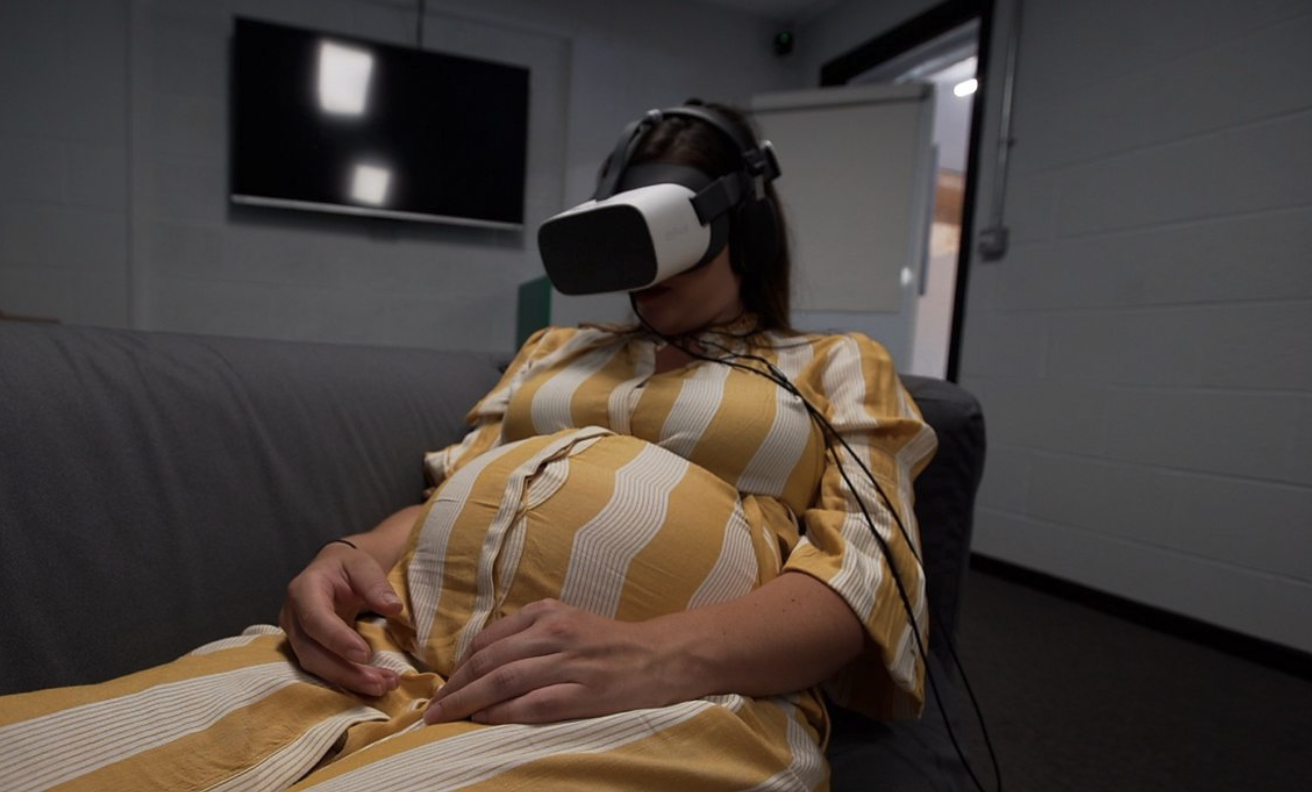Rescape was formed in 2018 by a team specialising in innovative technology and content creation. Its focus is to develop new virtual reality technologies for healthcare; it produces content for VR headsets that can be worn by patients to help reduce their pain and anxiety. Its products are currently used in hospitals, care homes and hospices.
We are content makers working in the medical world.
Me and my team have been making digital content for years; we use storytelling to immerse people into content, be it a TV programme, a film or a game. Now our job is to immerse people into created spaces using audio and visual to convince users that they are in a different place to where they are physically. We work with clinicians to think about how our content can benefit their patients and be user friendly.
We exist because of R&D.
A few years ago, we did some pro bono research with Velindre Cancer Hospital on using VR to help people desensitise around MRI scanners. We had good results and found a wealth of other research that says VR can be used to reduce both pain and anxiety. It led us to develop prototypes of a healthcare VR product and test it in hospices, hospitals and care homes until we had a sellable product.
VR is like a short circuit into the brain; it enables us to teach people different coping techniques quickly. Whereas something like mindfulness can take six months before you see a benefit, our VR can be used to make an impact much earlier.
Our existing products are used in a variety of settings.
NHS staff and private healthcare teams are using our DR.VR systems to reduce pain and anxiety in burns units, in fracture clinics and other situations where patients may need help to stay calm. Patients can experience different types of VR software, such as breathing exercises for calming, 360° videos for distraction and games that act as task-based distractions.
Before we applied for Clwstwr funding, we felt we were on the edge of something.
We knew we had the ability to make powerful content and we were intrigued by the possibilities for using VR in the medical world. We had already done feasibility studies around the use of VR in maternity and could see huge potential, so we successfully applied for Clwstwr funding to put towards the creation of a product.
We chose to use the Design Council’s Double Diamond methodology.
The Double Diamond is basically a design plan, a process with four phases that you follow to create something. We’d used elements of it for our DR.VR Junior product, and we were keen to see if it would work for us as a way of doing R&D.
We started with the ‘discover’ phase, gathering everyone we wanted to work with and assessing where we could go with the project. Then we went into the ‘define’ phase. We stopped thinking so big, discussed what we were actually going to do and boiled our ideas down into a set of briefs. In the ‘develop’ phase, we came up with six ideas for prototypes and thought about how they might work. Lastly, in the ‘deliver’ phase, we chose three of the prototypes to actually test on people to see if they worked.
The technology we’ve created is so special.
Throughout this project, we were really interested in biofeedback (where you use electronics to monitor certain automatic bodily functions, like breathing, in order to train someone to gain more voluntary control of that function). We designed each of the prototypes around the interaction between different biometric devices and VR environments.
One of the environments we created was a scene where you walk along an undulating path, one was based on migrating starlings and one was very much about visualisation. As the biometric devices picked up readings from the user to determine how relaxed they are in the real world environment, the VR environment was altered accordingly to help the user become more at ease.
We have lots of avenues to explore following our R&D.
The success of the R&D has encouraged us to continue developing a maternity and hypnobirthing VR product alongside our other work. We’re really encouraged by the work we’ve been doing around biofeedback, so we’ll continue to research and develop how VR and biofeedback can work harmoniously to better patients. We’d like to look into how the product could be used throughout pregnancy, not just at the birth, and we’d like to explore how it might be used for at-home hypnobirthing experiences.

